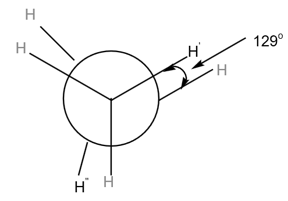MEDIUM
Earn 100
Weight (g) of two moles of the organic compound, which is obtained by heating sodium ethanoate with sodium hydroxide in presence of calcium oxide is :
(a)
(b)
(c)
(d)
62.5% studentsanswered this correctly
Important Questions on Hydrocarbons
MEDIUM

MEDIUM
EASY
EASY
MEDIUM

HARD
The total number of monohalogenated organic products in the following (including stereoisomers) reaction is
MEDIUM
MEDIUM
EASY

EASY
MEDIUM
HARD
Isomers of hexane, based on their branching, can be divided into three distinct classes as shown in the figure.

The correct order of their boiling point is
MEDIUM
MEDIUM
Which of the following is a free radical substitution reaction?
EASY
MEDIUM
Which hydrogen in compound is easily replaceable during bromination reaction in presence of light ?

MEDIUM
Assertion (A): Sodium acetate on Kolbe's electrolysis gives ethane.
Reason (R): Methyl free radical is formed at cathode.
EASY

